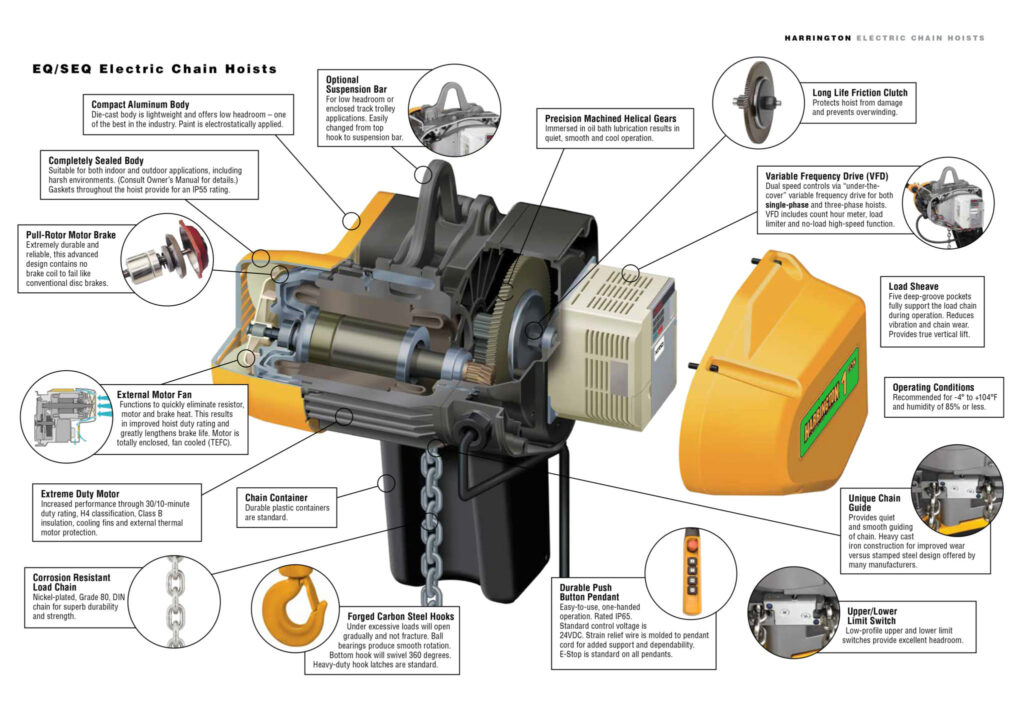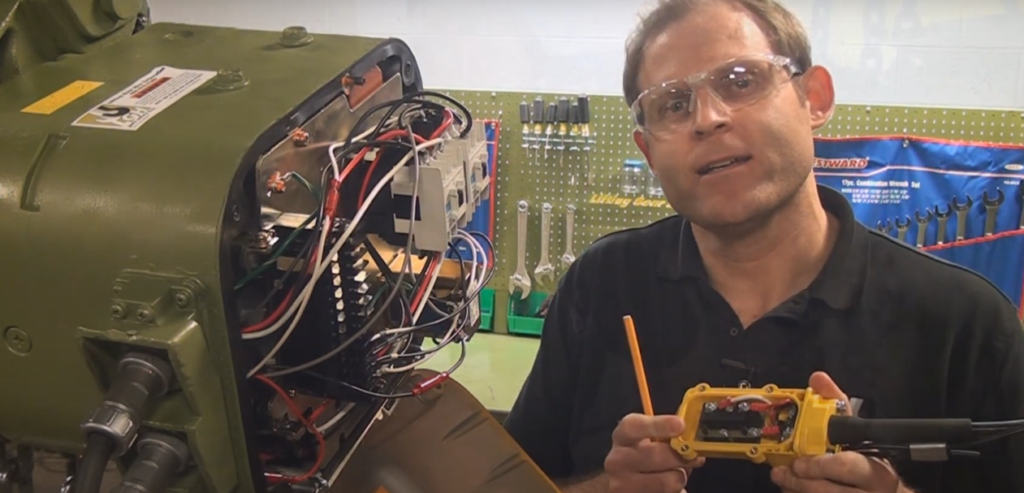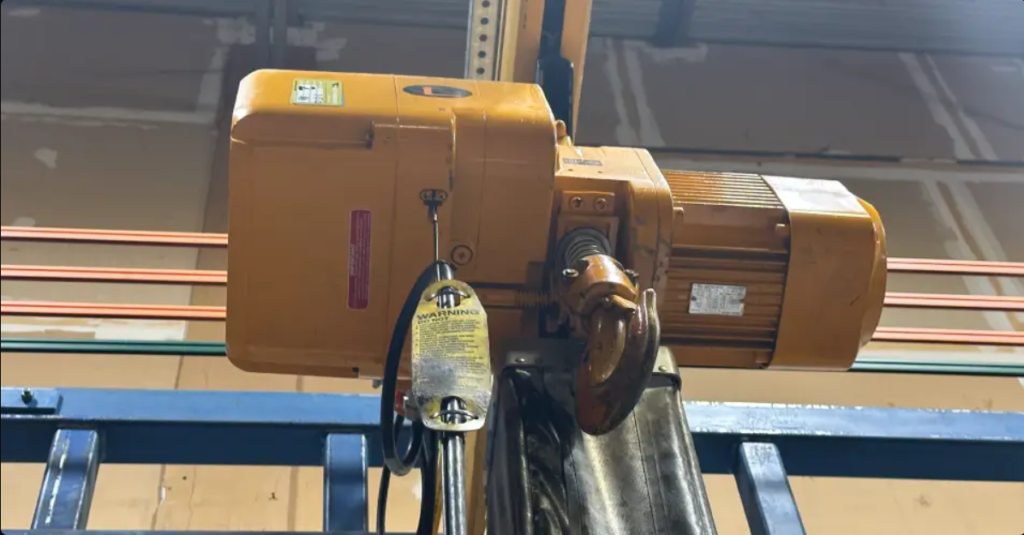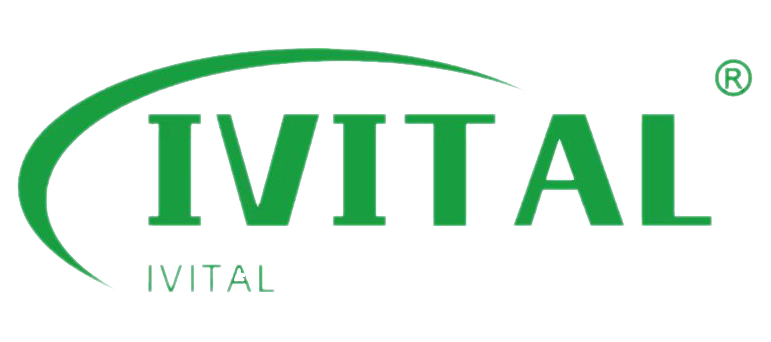High-capacity electric chain hoists are vital tools in industries that require heavy lifting, but they often encounter performance, safety, and maintenance issues. Improper usage, electrical failures, or worn components can cause downtime, operational inefficiencies, and safety hazards. Addressing these problems promptly is essential to ensure smooth and safe operations.
The most common problems with high-capacity electric chain hoists include electrical failures, chain wear, motor malfunctions, and brake issues. Regular maintenance, proper training, and adherence to safety protocols are critical solutions. Troubleshooting guides can also help identify and fix issues promptly, reducing downtime and enhancing operational safety.

Understanding these challenges can save time and costs. Let’s dive into specific problems and solutions to maintain your hoists efficiently.
Why Is My Electric Hoist Not Going Up?
An electric hoist failing to lift may stem from power supply issues, control circuit problems, or mechanical failures. Understanding these potential causes helps troubleshoot effectively.
Common reasons include insufficient voltage, faulty controls, overloaded hoist, or mechanical jams.

Let’s explore possible issues and practical solutions.
Could Power Supply Issues Be the Cause?
Yes, power supply problems are often the primary reason a hoist won’t operate.
Blown fuses, low voltage, or incorrect phase connections can disrupt hoist functionality.
Dive Deeper: Power Supply Troubleshooting
- Blown Fuse or Tripped Breaker:
- Check the hoist’s fuse or circuit breaker.
- Replace blown fuses or reset tripped breakers.
- Low Voltage:
- Measure voltage at the motor input using a multimeter.
- Ensure voltage is within 10% of the rated level.
- Incorrect Phase Connection:
- Improper electrical phase connections may activate phase protection.
- Swap two-phase power cords to resolve this issue.
| Issue | Symptoms | Solution |
|---|---|---|
| Blown Fuse | No power, hoist unresponsive | Replace fuse or reset breaker |
| Low Voltage | Hoist struggles to operate | Measure and stabilize voltage |
| Phase Connection | Motor hums but no movement | Correct phase wiring |
Could Control Circuit Problems Be the Issue?
Faulty controls can prevent the hoist from lifting.
Damaged switches, loose connections, or an activated emergency stop may block operation.
Dive Deeper: Control System Fixes
- Control Switches:
- Inspect the pendant and switches for damage or wear.
- Repair or replace malfunctioning components.
- Emergency Stop:
- Ensure the emergency stop button isn’t pressed.
- Reset it to resume operation.
Could Mechanical Issues Be Responsible?
Mechanical problems are another common reason.
Overloading or brake malfunctions may obstruct lifting operations.
Dive Deeper: Mechanical Troubleshooting
- Overloaded Hoist:
- Confirm that the load doesn’t exceed the hoist’s rated capacity.
- Reduce the load if necessary.
- Brake Problems:
- Check for stuck or improperly adjusted brakes.
- Adjust or repair brakes to ensure smooth operation.
- Jammed Mechanism:
- Inspect gears and internal components for damage or jams.
- Lubricate moving parts and replace any damaged components.
Could Motor or Internal Failures Be at Fault?
Yes, motor issues or internal failures can also prevent upward movement.
A malfunctioning motor or jammed internal mechanism requires immediate attention.
Dive Deeper: Motor and Mechanical Failures
- Motor Malfunction: If the motor hums but doesn’t lift, check for phase connection issues or internal motor failure.
- Internal Jams: Inspect for gear jams or broken parts, then lubricate or replace them as needed.
How to Troubleshoot Electric Chain Hoist Jammed Issues?
A jammed electric chain hoist can interrupt operations, but systematic troubleshooting can help identify and resolve the issue efficiently.
Start with power checks, inspect mechanical components, and assess operational factors to pinpoint the cause.

Follow these steps for effective troubleshooting.
What Initial Checks Should You Perform?
Start with basic inspections of power supply and control systems.
Ensure the hoist is receiving power and that controls are functioning correctly.
Dive Deeper: Initial Troubleshooting
- Power Supply:
- Verify that the hoist is plugged in securely.
- Inspect power cables for damage or disconnections.
- Check fuses and circuit breakers; replace or reset as needed.
- Control System:
- Test the control switch for functionality.
- Ensure the emergency stop button hasn’t been pressed accidentally.
| Problem | Possible Cause | Solution |
|---|---|---|
| No Power | Blown fuse or tripped breaker | Replace fuse/reset breaker |
| Unresponsive Controls | Faulty switch or emergency stop | Repair/reset components |
What Mechanical Inspections Are Necessary?
Mechanical components often cause jamming if they’re misaligned or worn out.
Inspect the chain, brake system, and gears to identify visible issues.
Dive Deeper: Mechanical Inspections
- Chain or Rope Condition:
- Look for tangles, kinks, or damage.
- Align the chain properly and ensure it’s free from obstructions.
- Brake System:
- Check if the brake is stuck or not releasing.
- Inspect for worn pads or faulty mechanisms; repair or replace as needed.
- Gears and Pulleys:
- Inspect for damage or wear.
- Listen for unusual noises indicating mechanical failure.
Are Operational Factors Contributing to the Jam?
Operational issues like overloading or insufficient lubrication may lead to jamming.
Evaluate load capacity and ensure proper maintenance.
Dive Deeper: Operational Factors
- Load Assessment:
- Confirm the load is within the hoist’s rated capacity.
- Distribute the load evenly to avoid imbalance.
- Lubrication and Maintenance:
- Check if moving parts are adequately lubricated.
- Follow the manufacturer’s maintenance schedule to prevent wear and tear.
How to Handle Advanced Troubleshooting?
If basic and mechanical inspections don’t resolve the issue, dive into electrical connections and advanced mechanical components.
Loose wiring or worn parts may require more detailed inspection.
Dive Deeper: Advanced Checks
- Electrical Connections:
- Look for loose wires or corroded connections.
- Ensure power flow is consistent and uninterrupted.
- Mechanical Components:
- Examine internal gears and mechanisms for misalignment or breakage.
- Replace defective parts as needed.
Summary
High-capacity electric chain hoists can encounter various issues, but with regular maintenance, proper training, and timely troubleshooting, you can minimize downtime and enhance operational safety. What challenges have you faced with electric hoists? Share your experience below to help the community!


